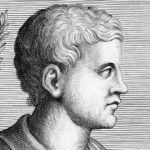This book is a gem and the latest in a series written over a span of about thirty years. All this series of books are based around Luke 15. The parable Jesus told of the sheep, the coin and the sons. Or should we say, of the shepherd, the woman and the father. The author spent forty years living and teaching in the Middle East. He brings out so much of local color in his books, there is fresh insight and revelation and in this latest book he examines the well known parable of the prodigal son and shows how, in telling it, Jesus took the story of Jacob and reshaped it in His own way and for His own purposes. There are similarities in the two stories, and we must remember that Jacob is ‘Israel’ and there are great differences too. Jesus makes changes in the story and why did He do so? Consider the parallel between the two fathers in the two stories. Isaac was the father of Jacob, and was dull and passes from the story line later when his son went off into exile and was enriched there. In contrast the father Jesus reveals in his story manifests such costly love towards his exiled son on his return in poverty. It is the contention of Kenneth Bailey that the Lord Jesus is teaching a profound theology of Israel and its history and reinterpreting the God and Father of the nation to the confused and darkened people of His day. The first book in this series which Kenneth Bailey wrote was called “Poet and Peasant” and this was followed by “Through Peasant Eyes” followed by “Finding the Lost: cultural keys to Luke 15”. The parables are freighted with great theological significance. They are vehicles and the Lord Jesus is offering a fresh opportunity through which His hearers would know their God. The older brother in the parable mainly in view in this book is clearly representative of the spirit and attitude of the Pharisees who were so critical of Jesus and His openness to the publicans and sinners who themselves are the younger son of the parable. The Father came out of the house seek to reconcile both sons, He demonstrates such costly love towards the younger son and it is this that brought him to repentance and the father demonstrated the same costly love towards the older son and the story concludes in Jesus telling of it, open-ended. What did the older son do? What would the Pharisees do with the Father’s love manifested through His Son? There is much food in these writings of Kenneth Bailey, much blessing to the reader.
JACOB AND THE PRODIGAL
Category: Biblical Exposition
Tags: father, Kenneth Bailey, love, story




